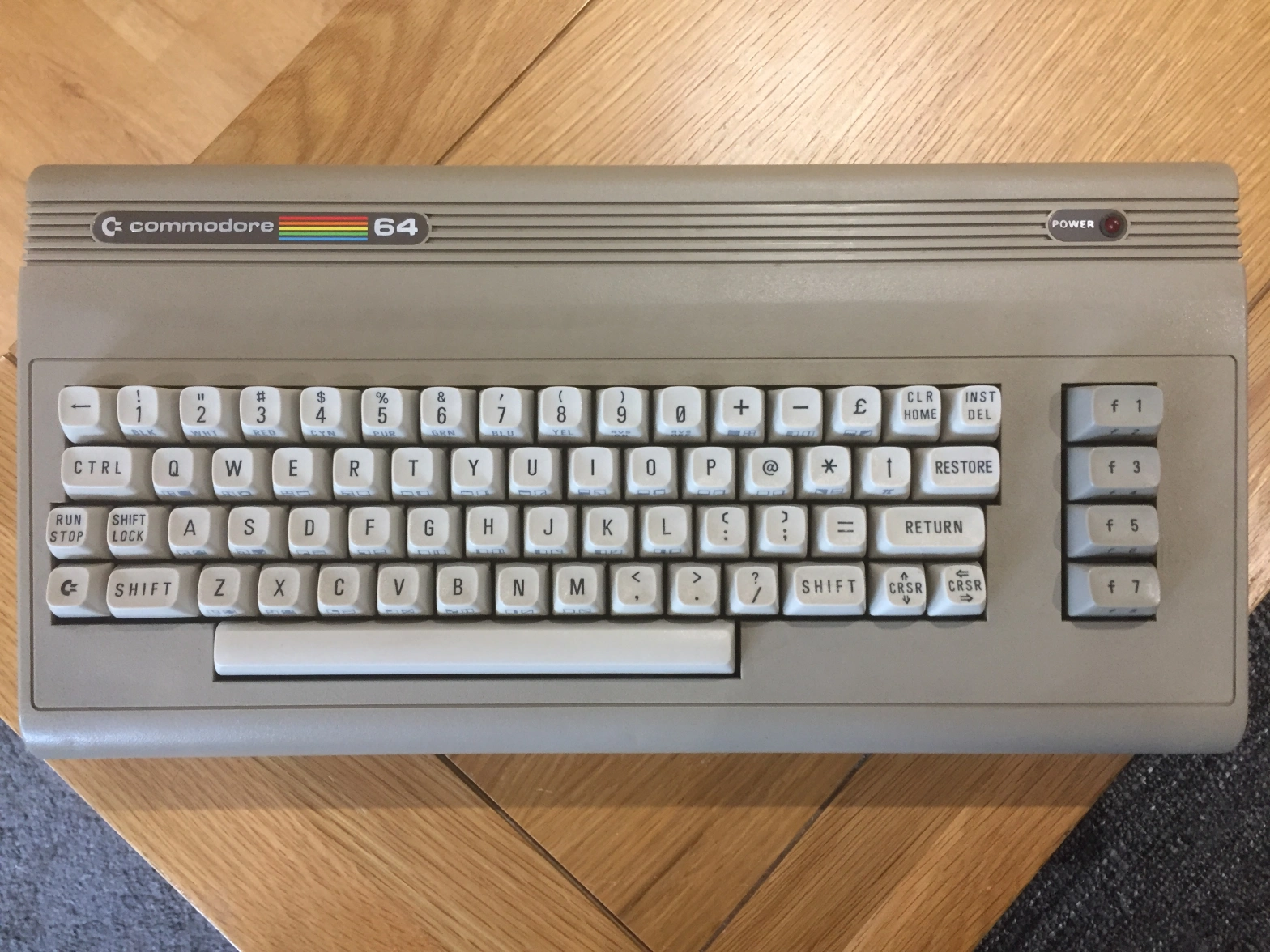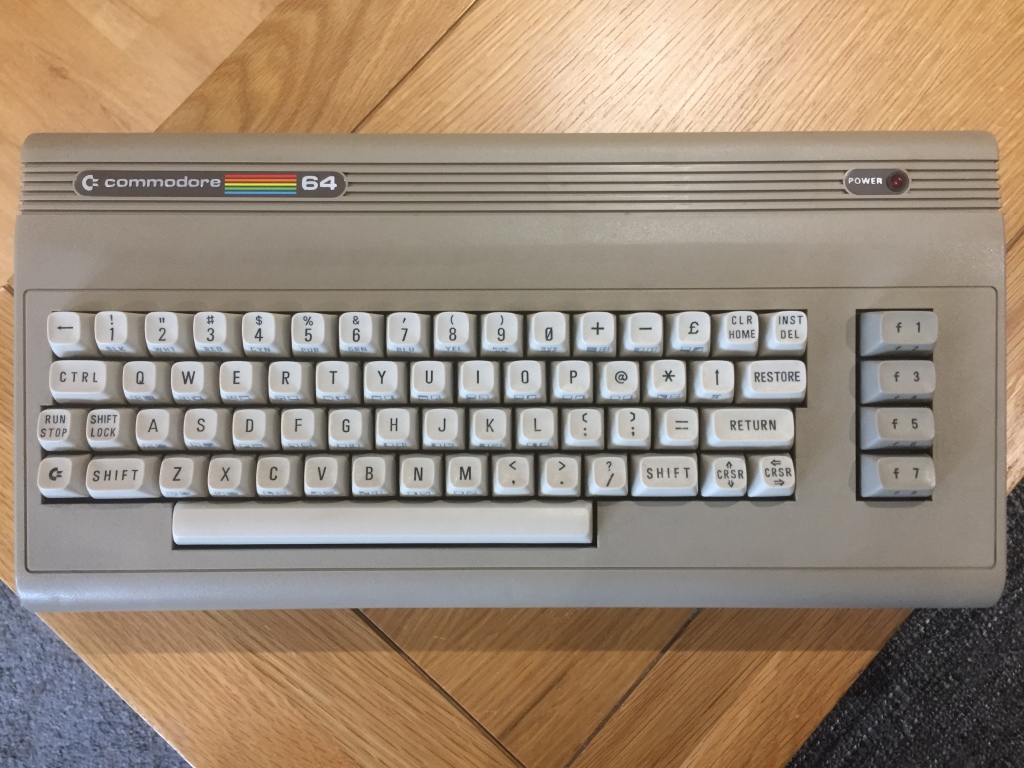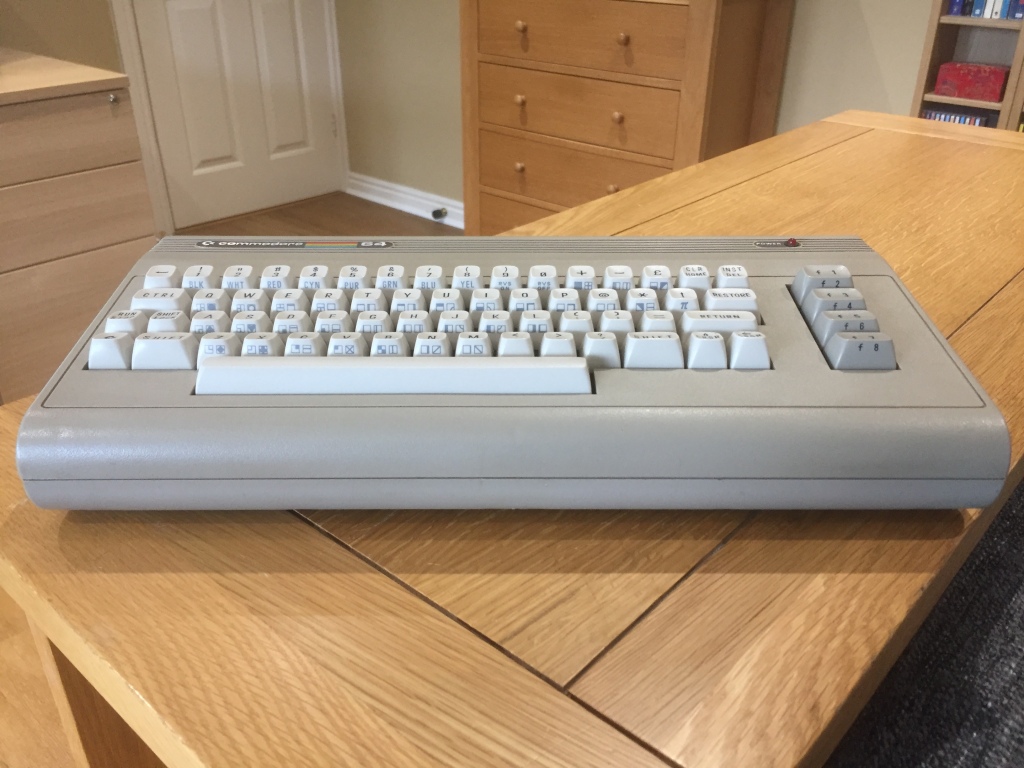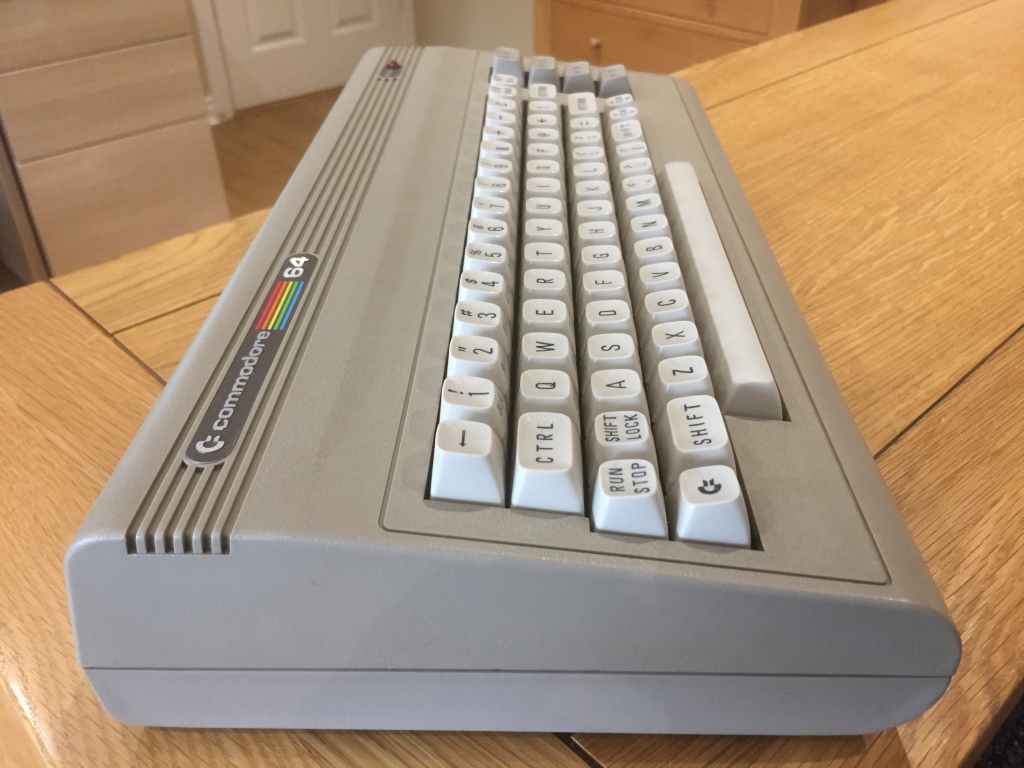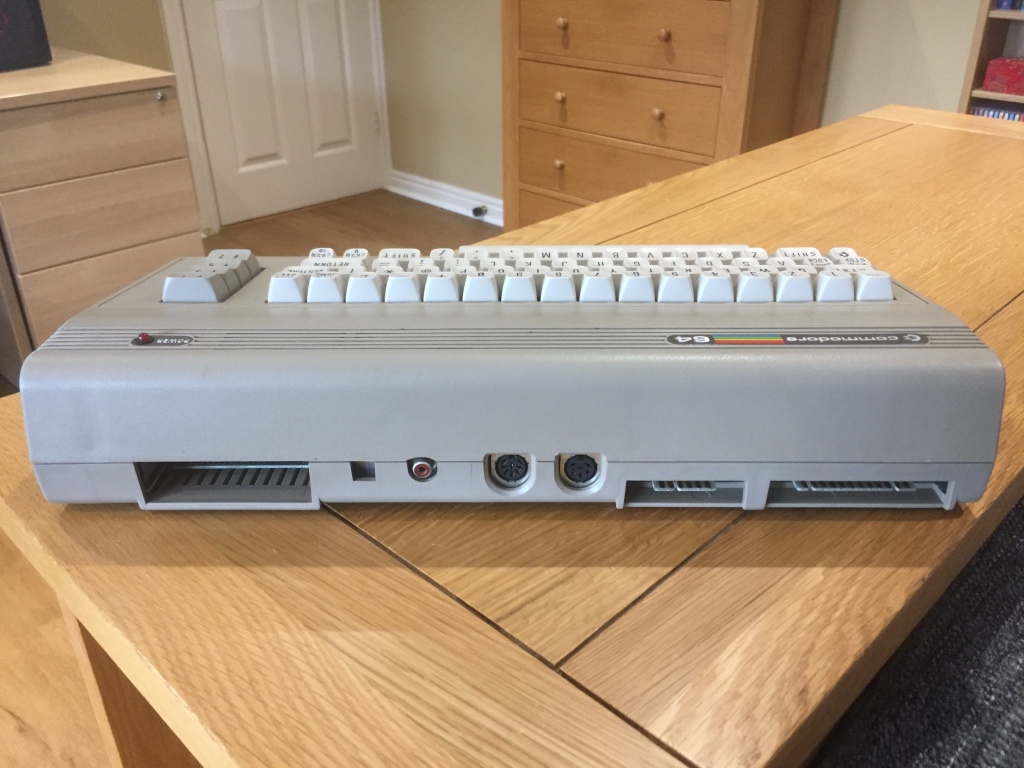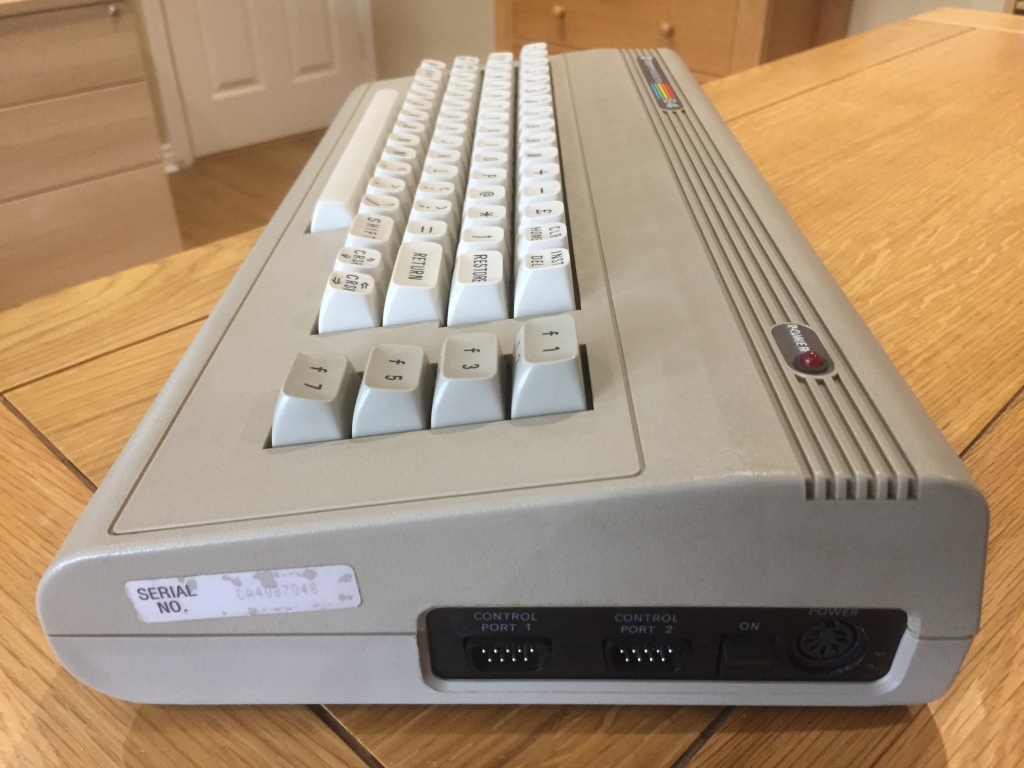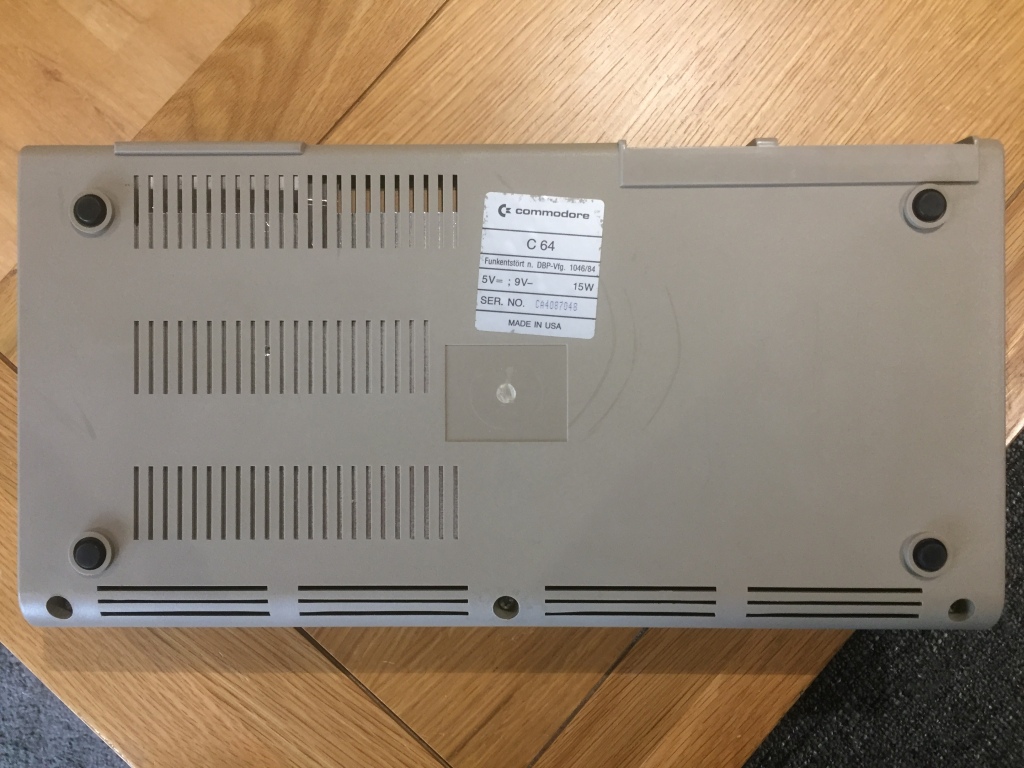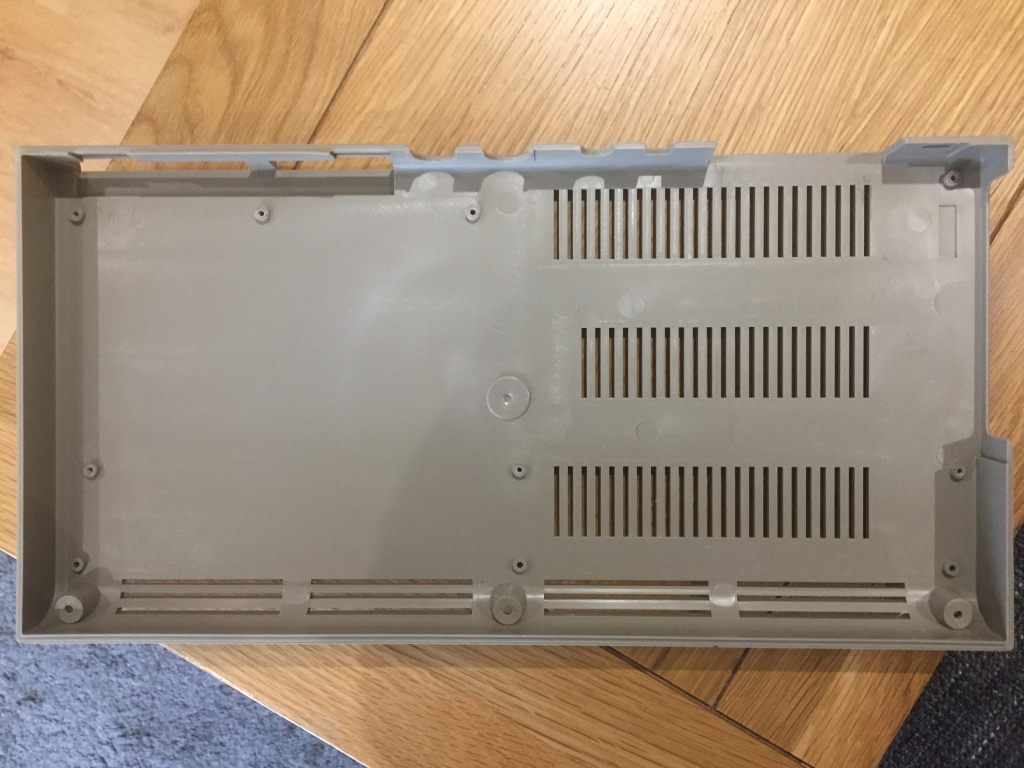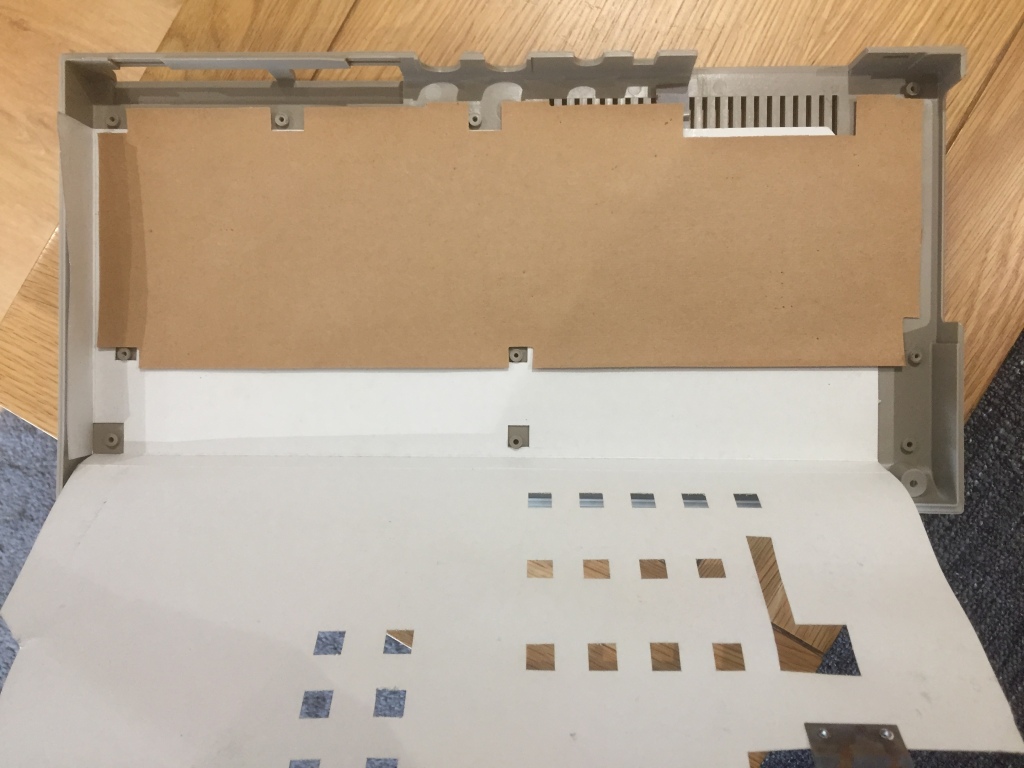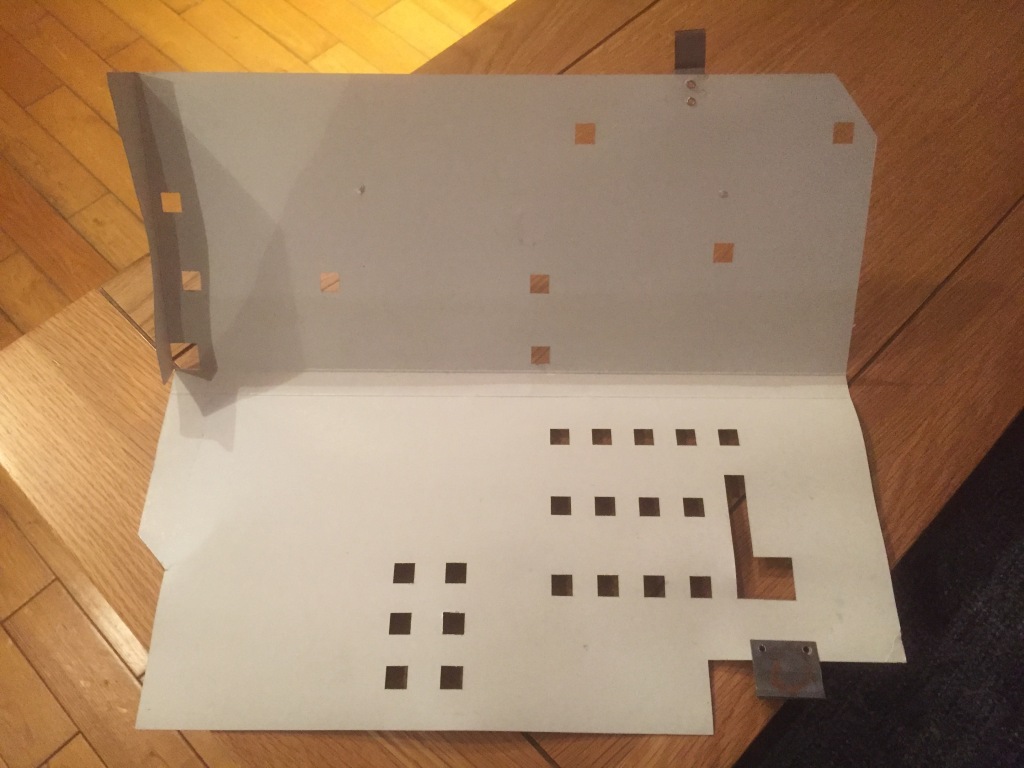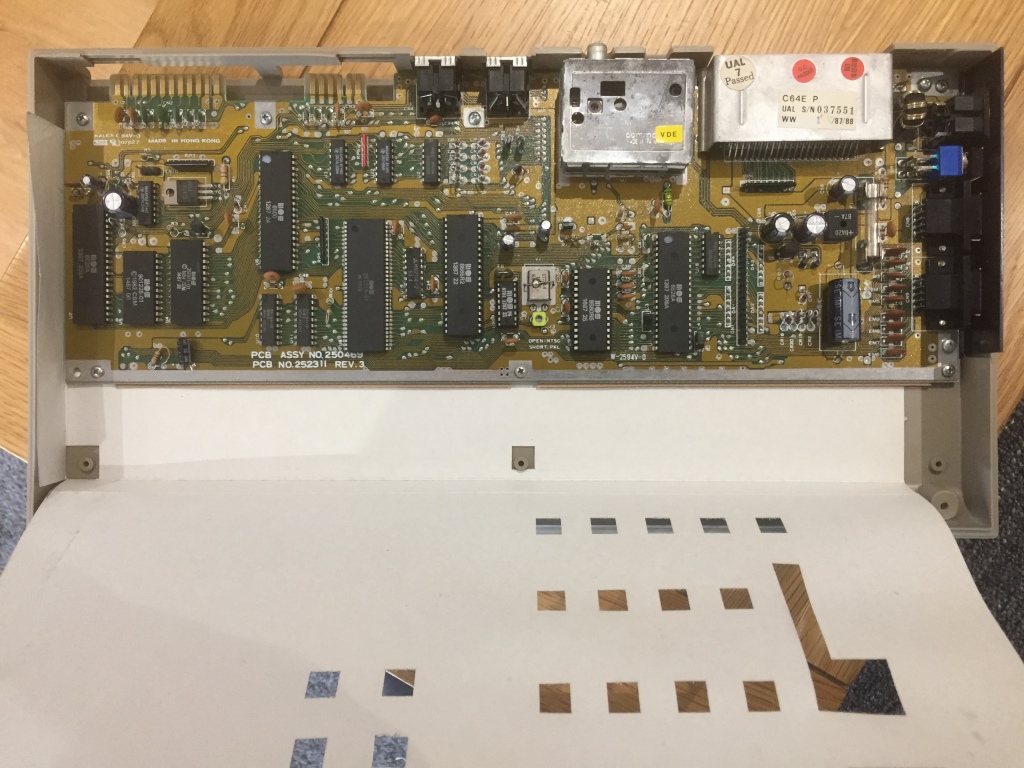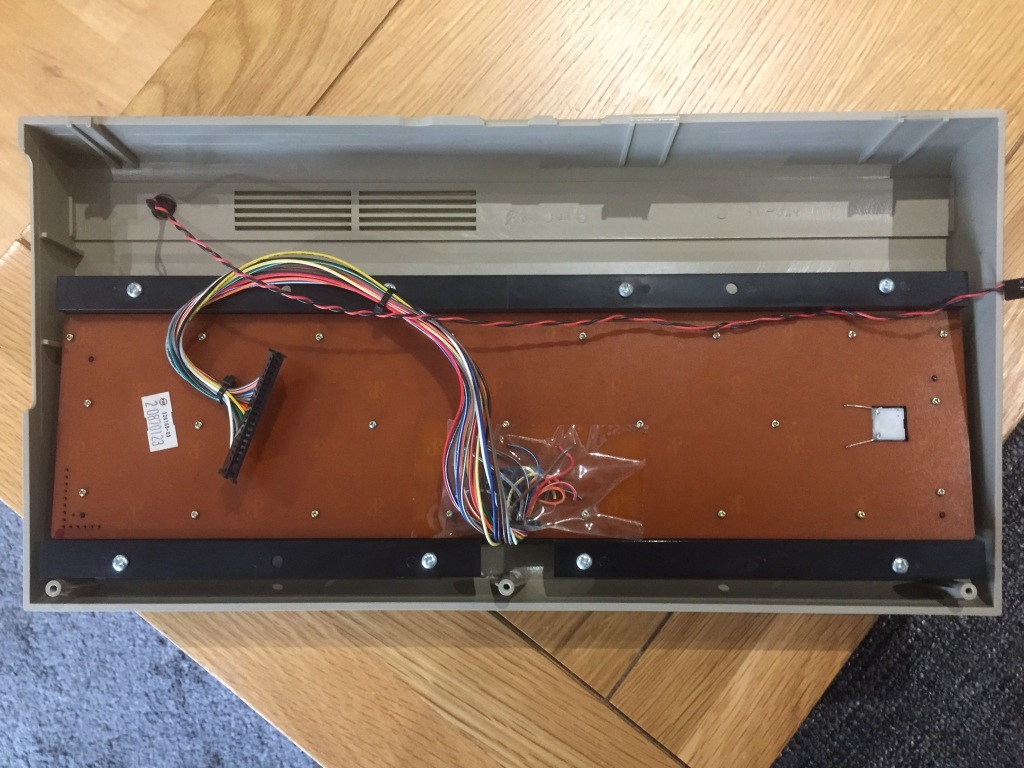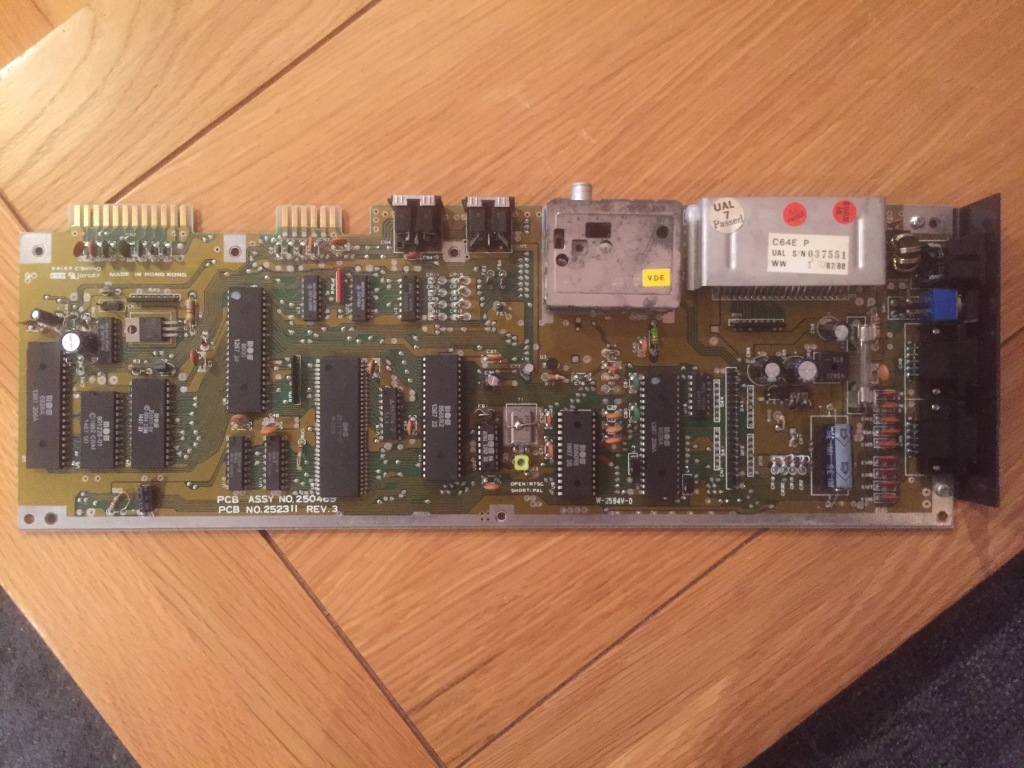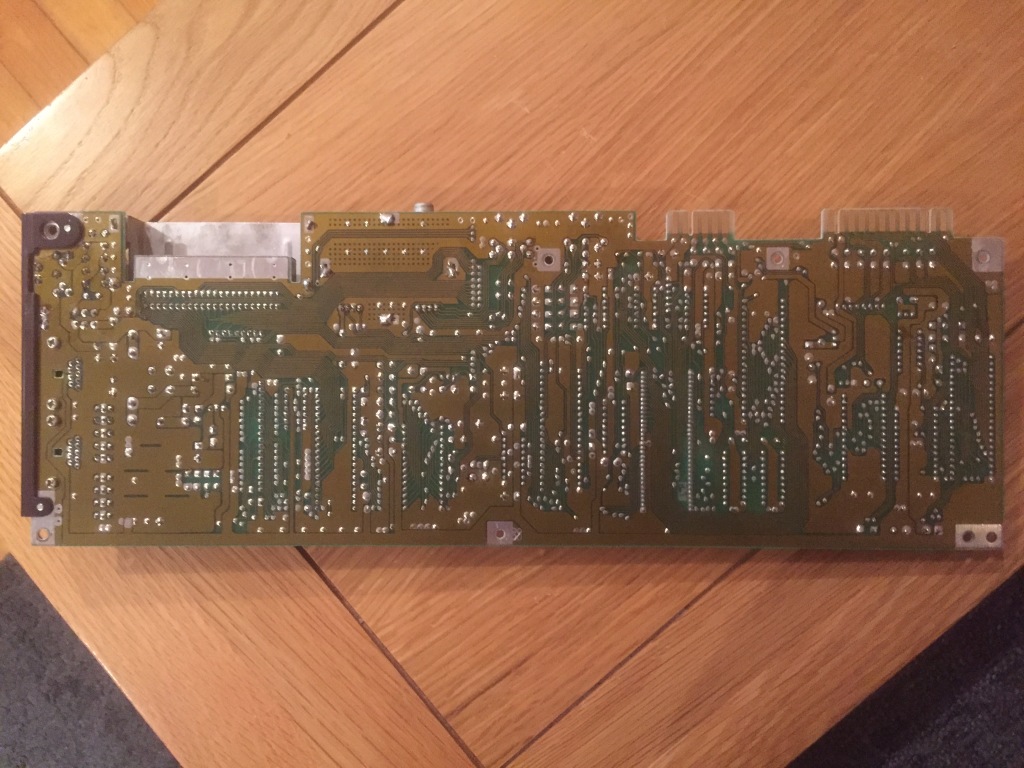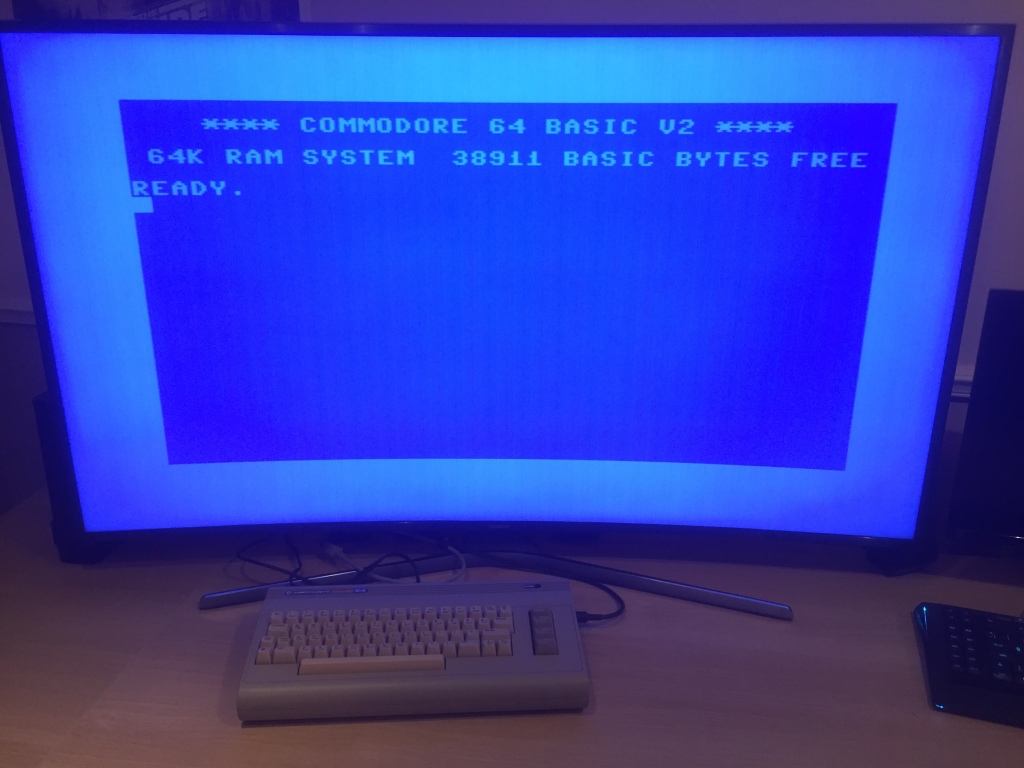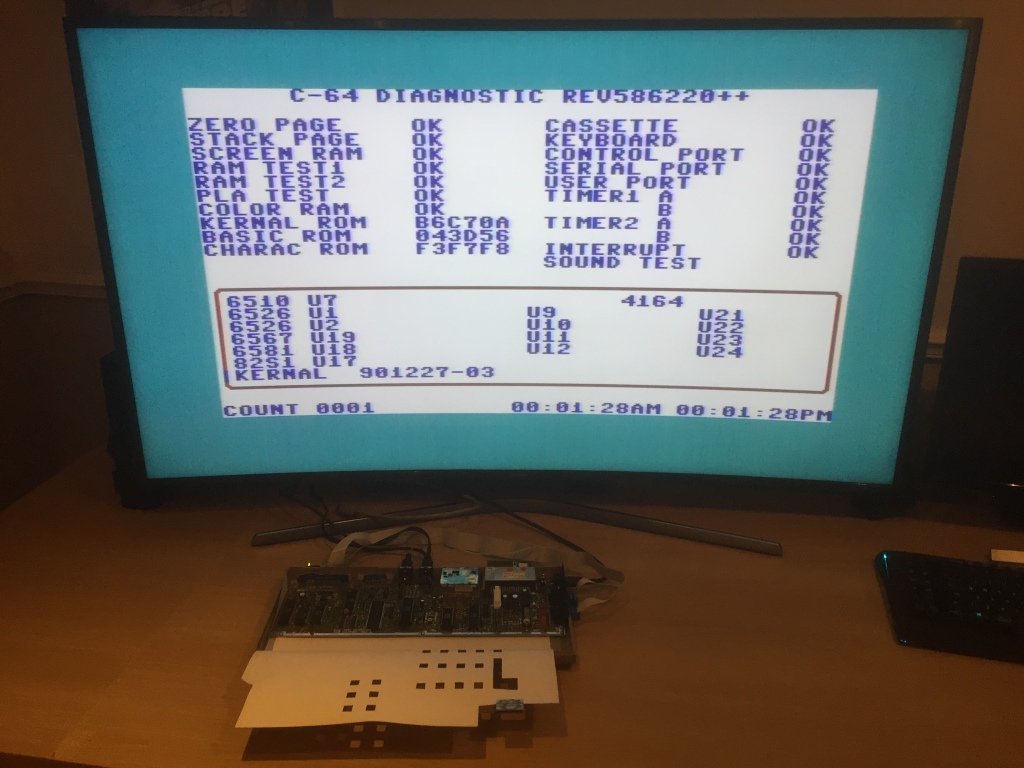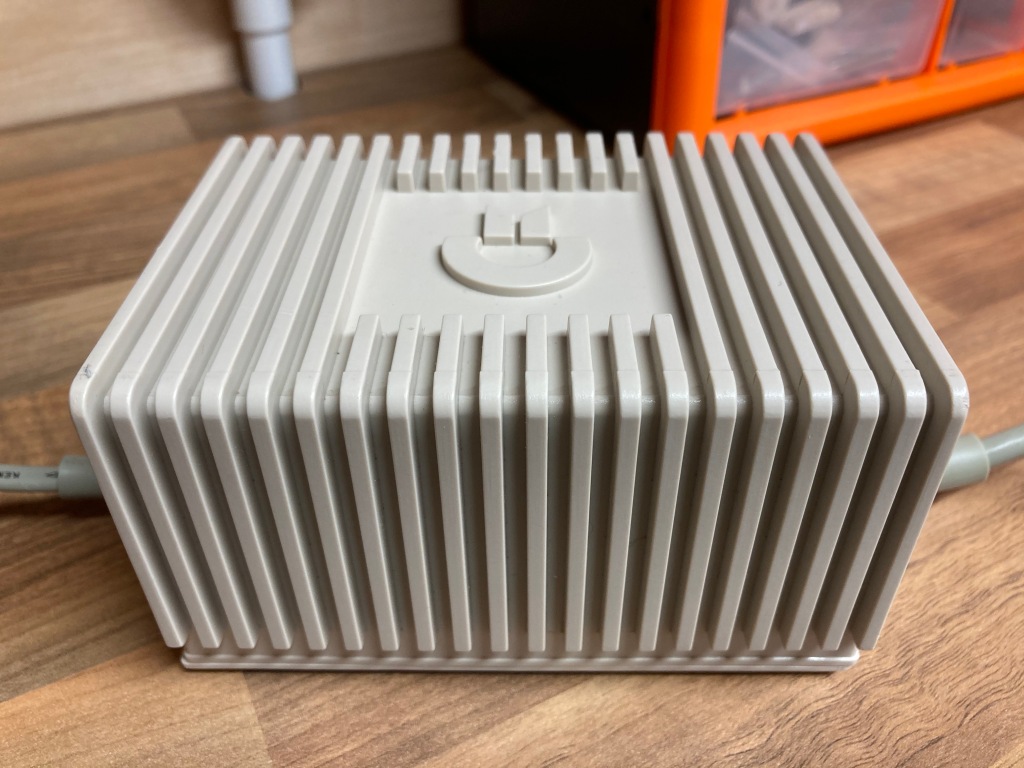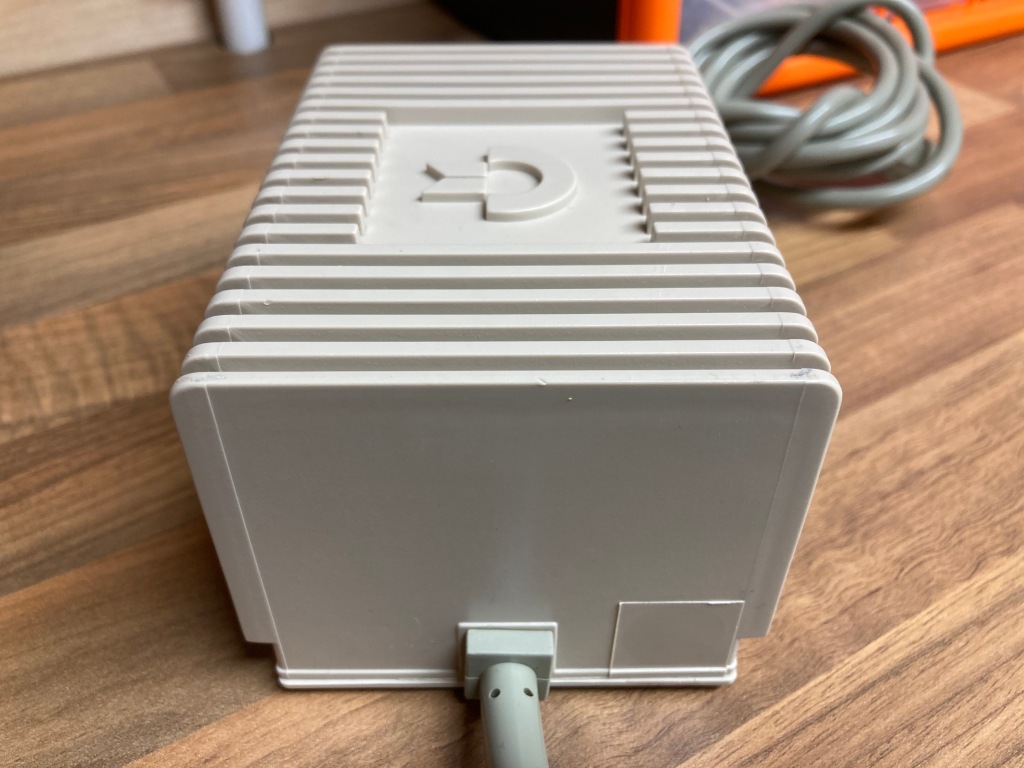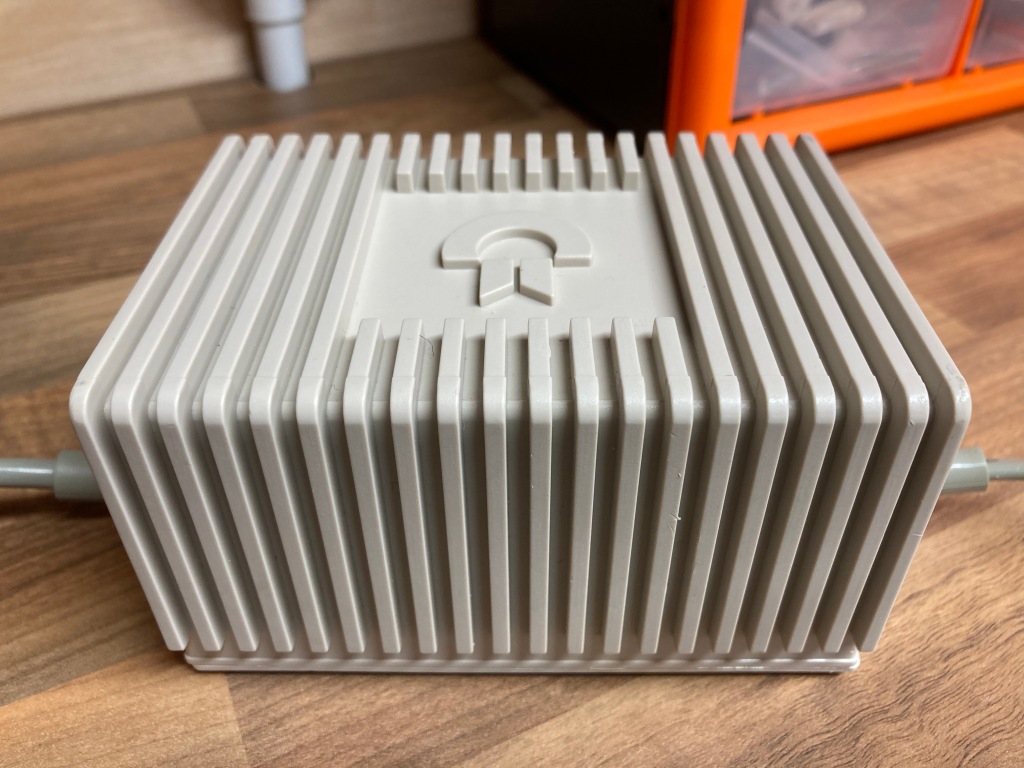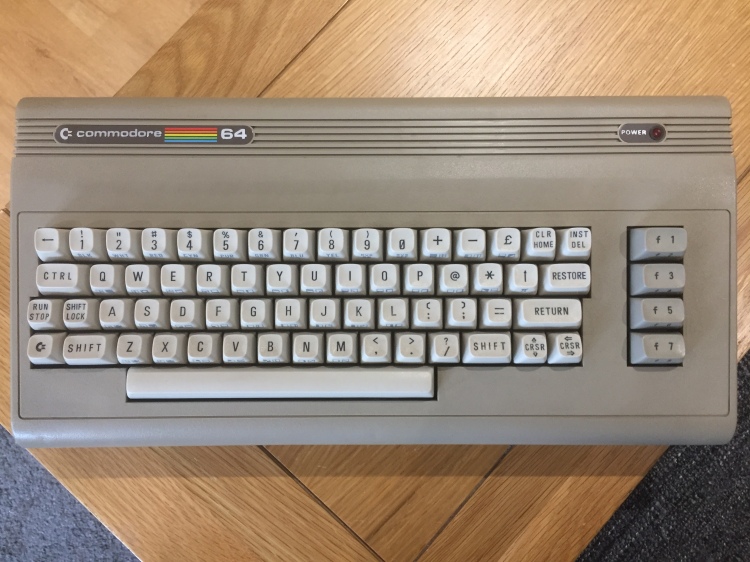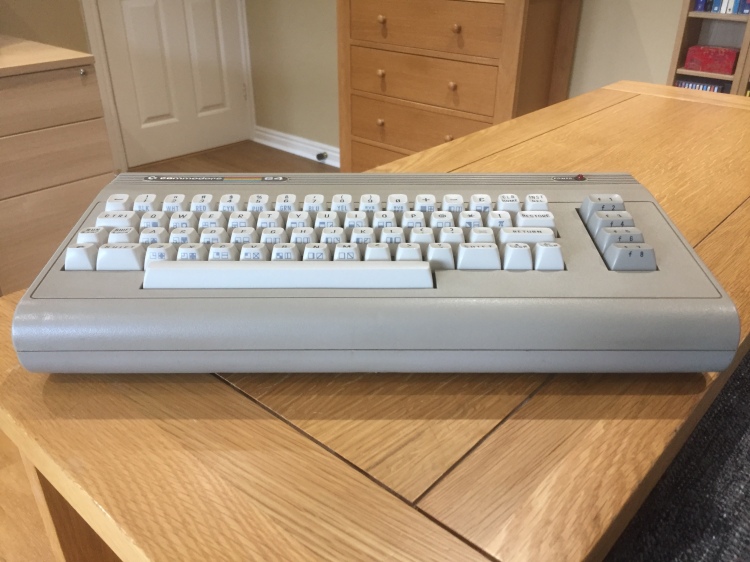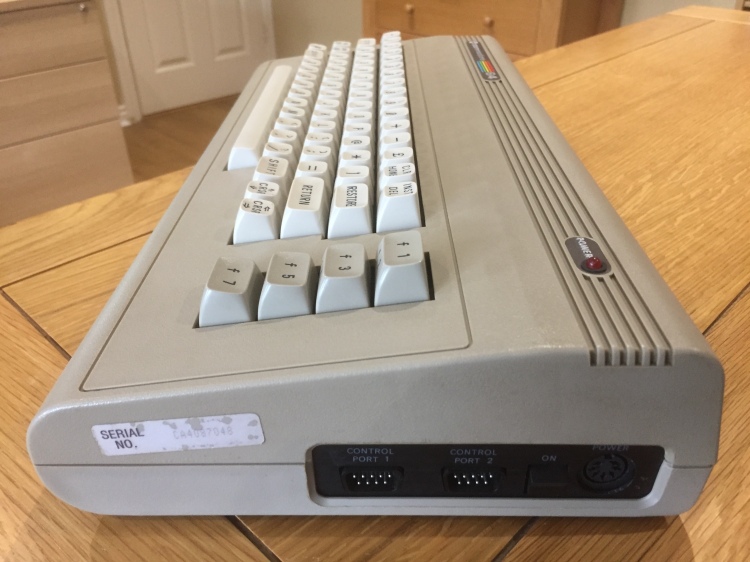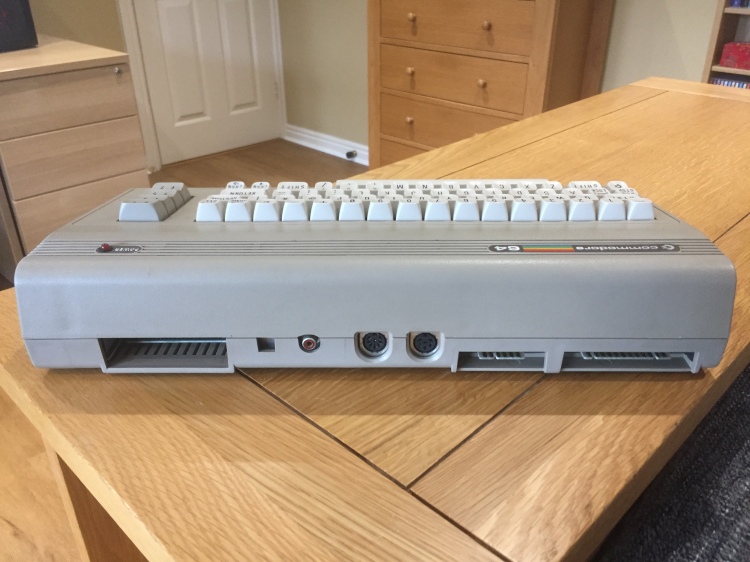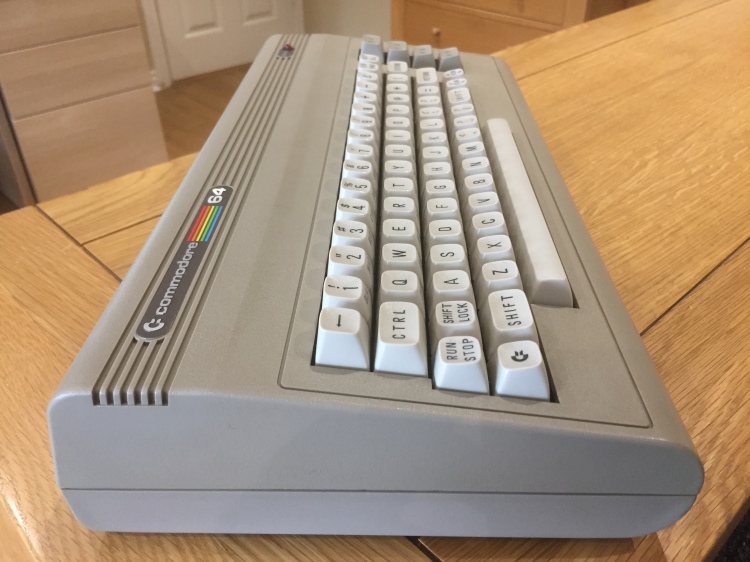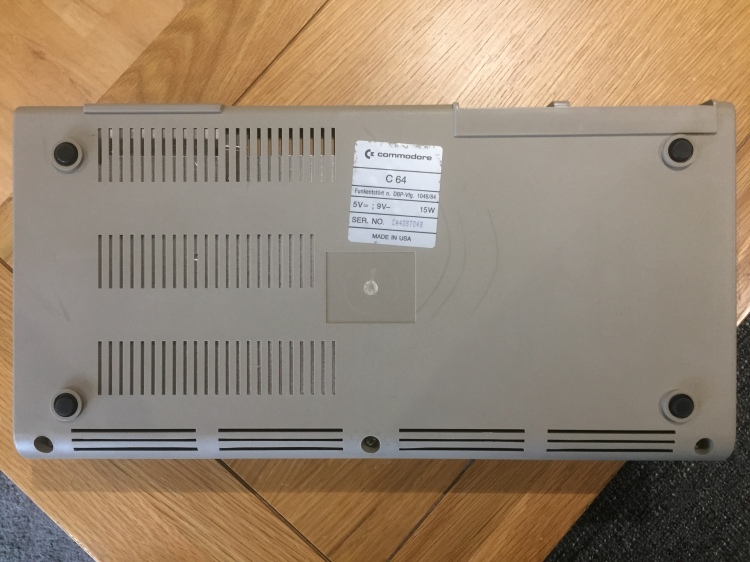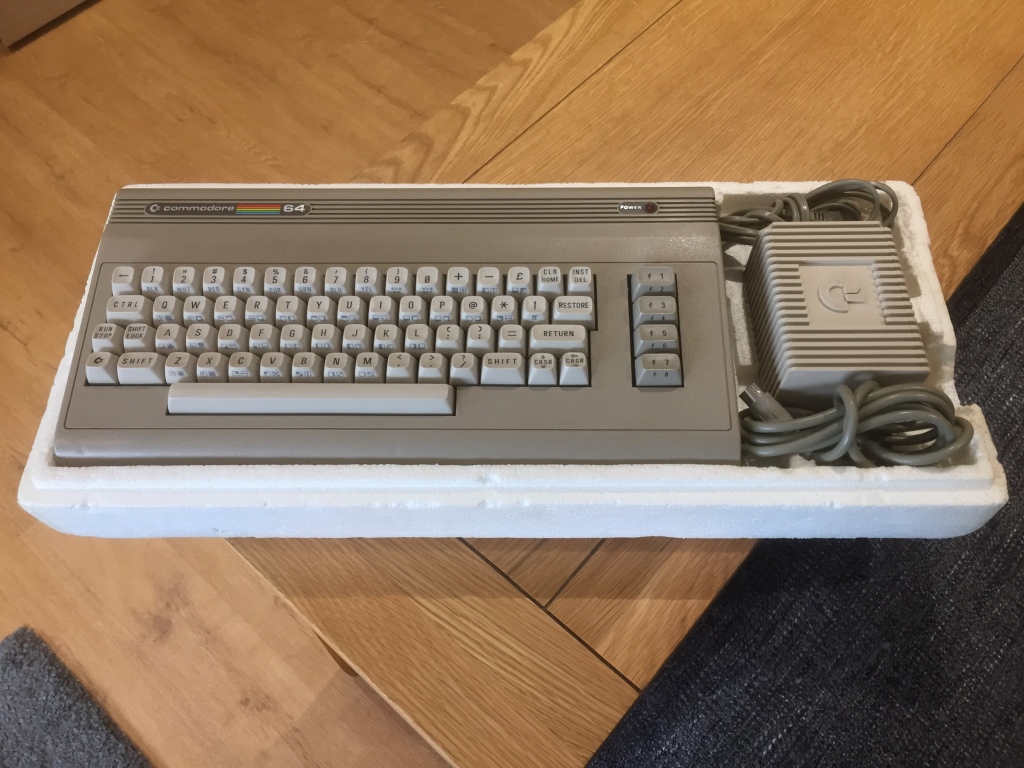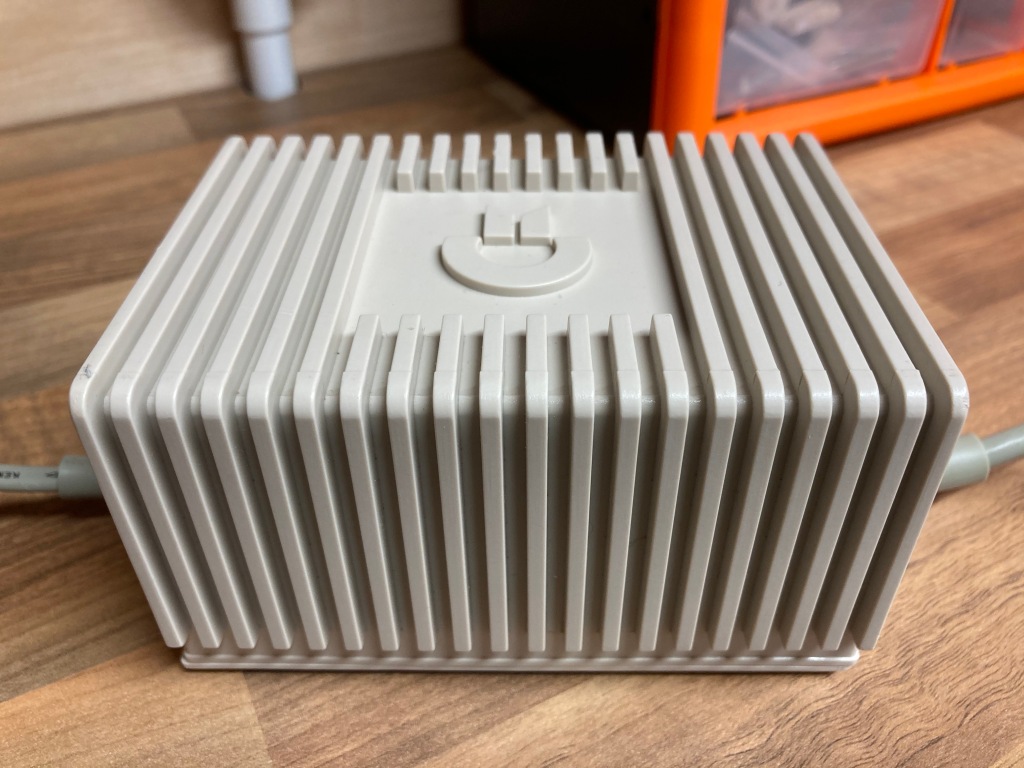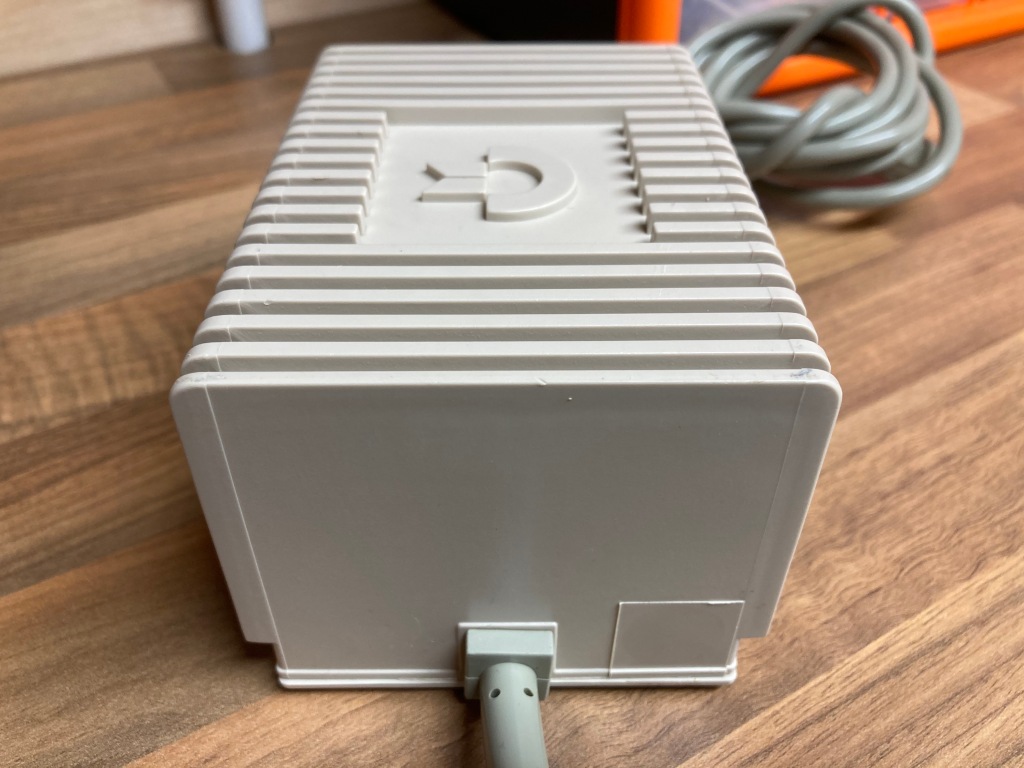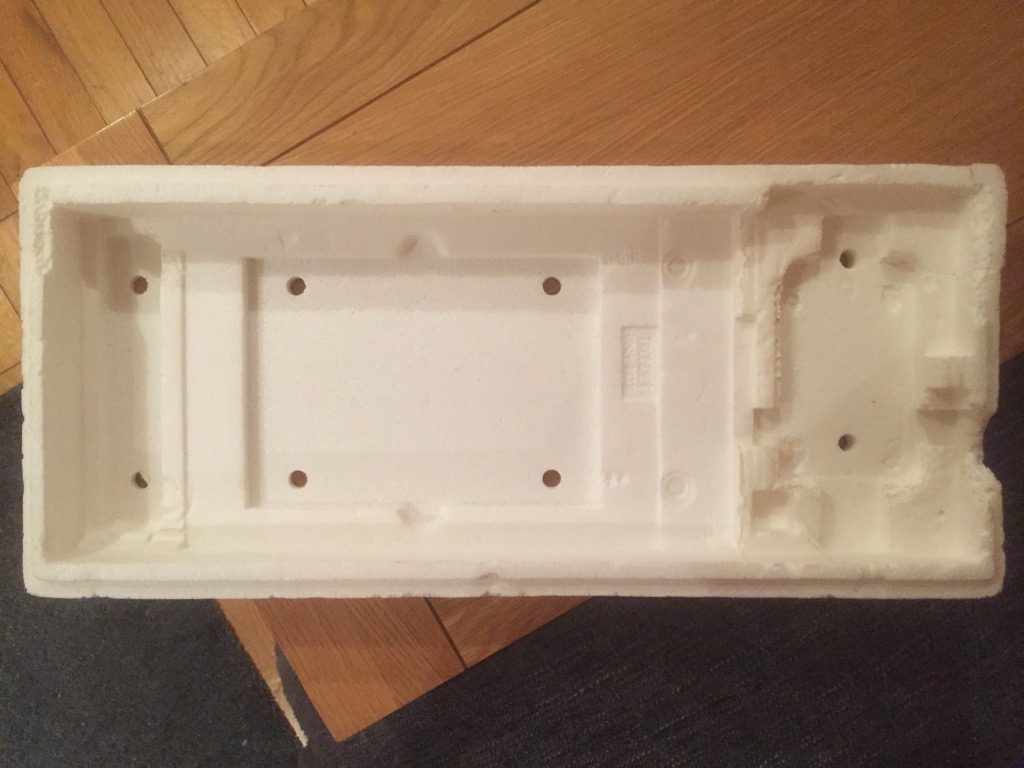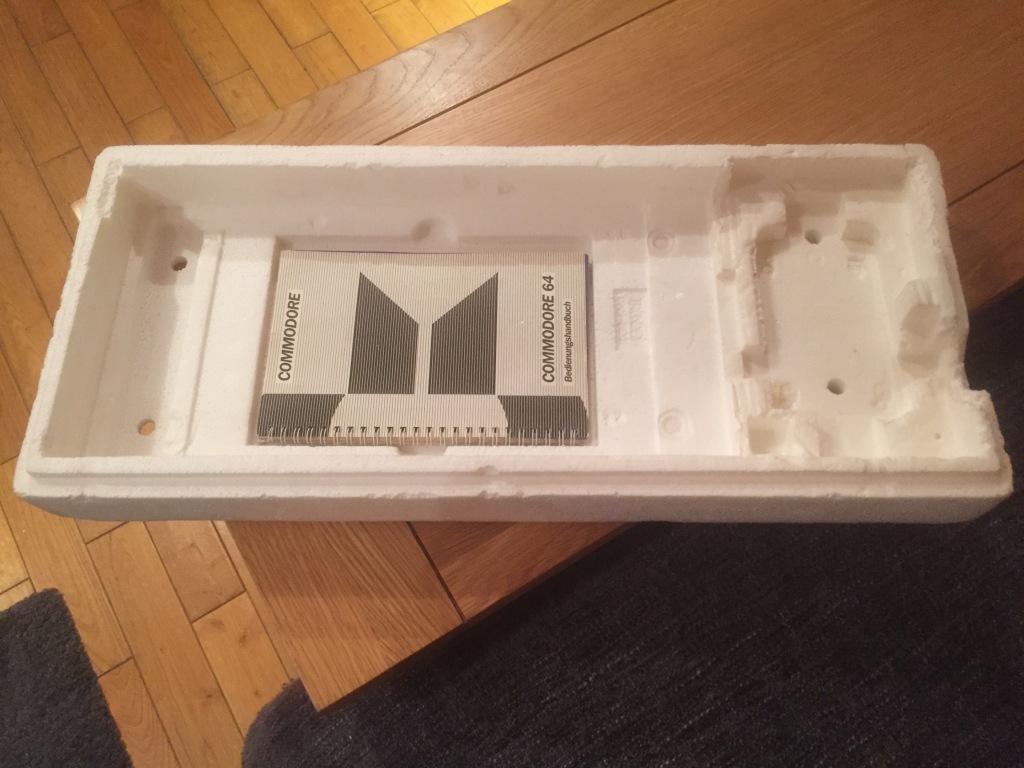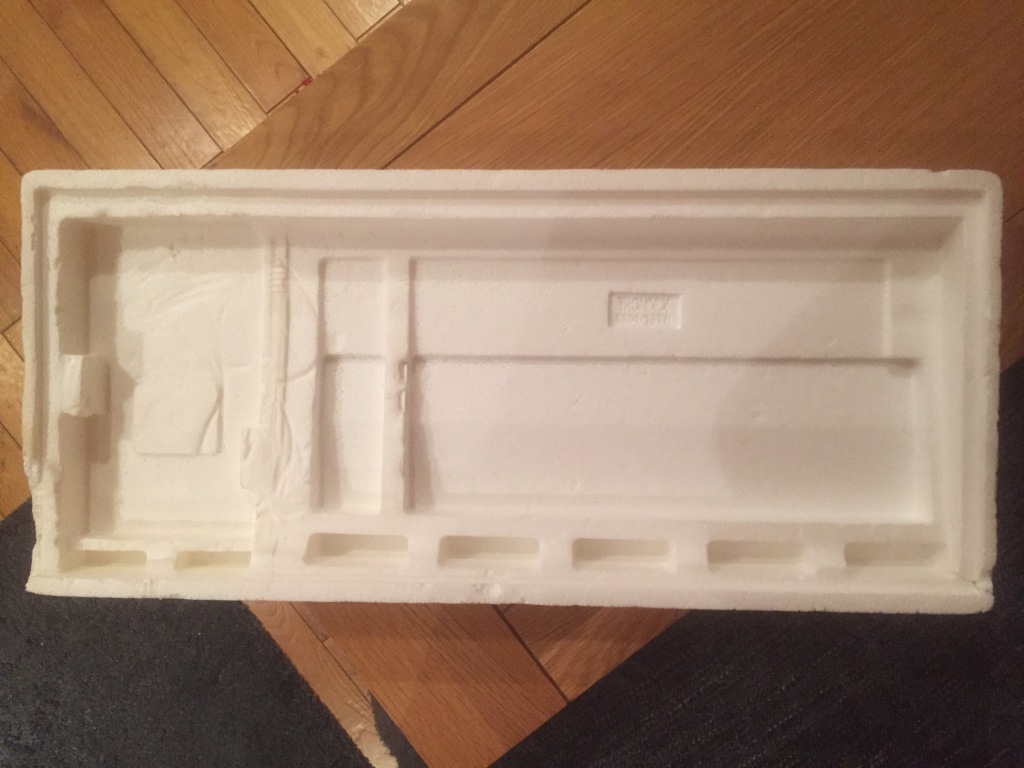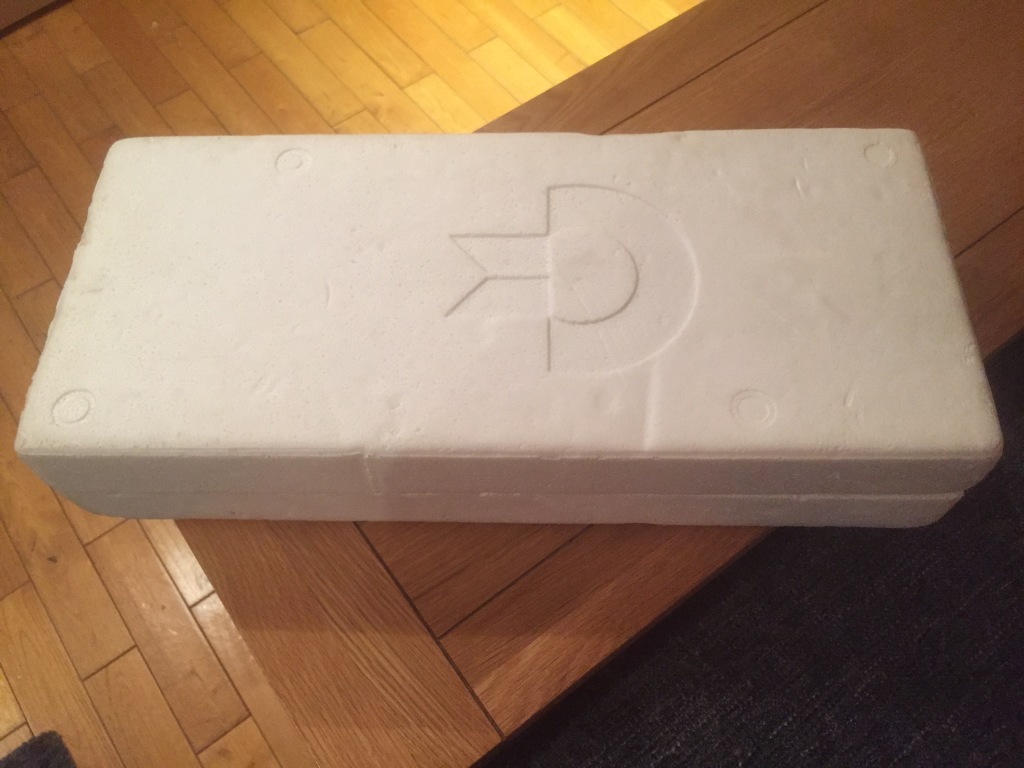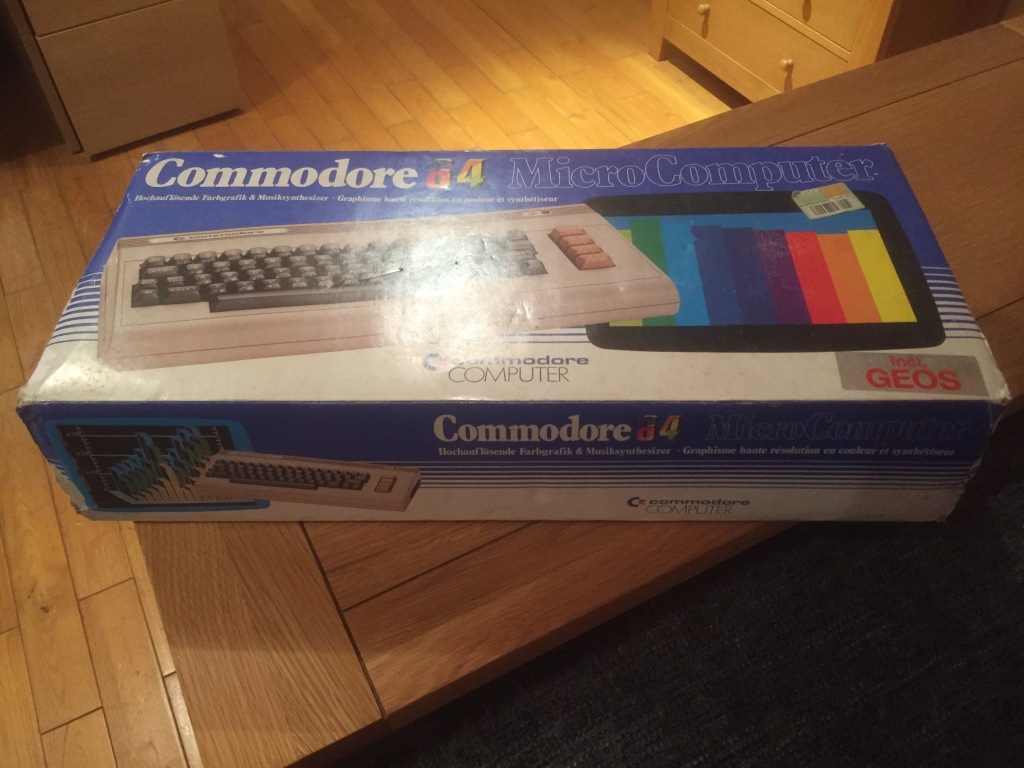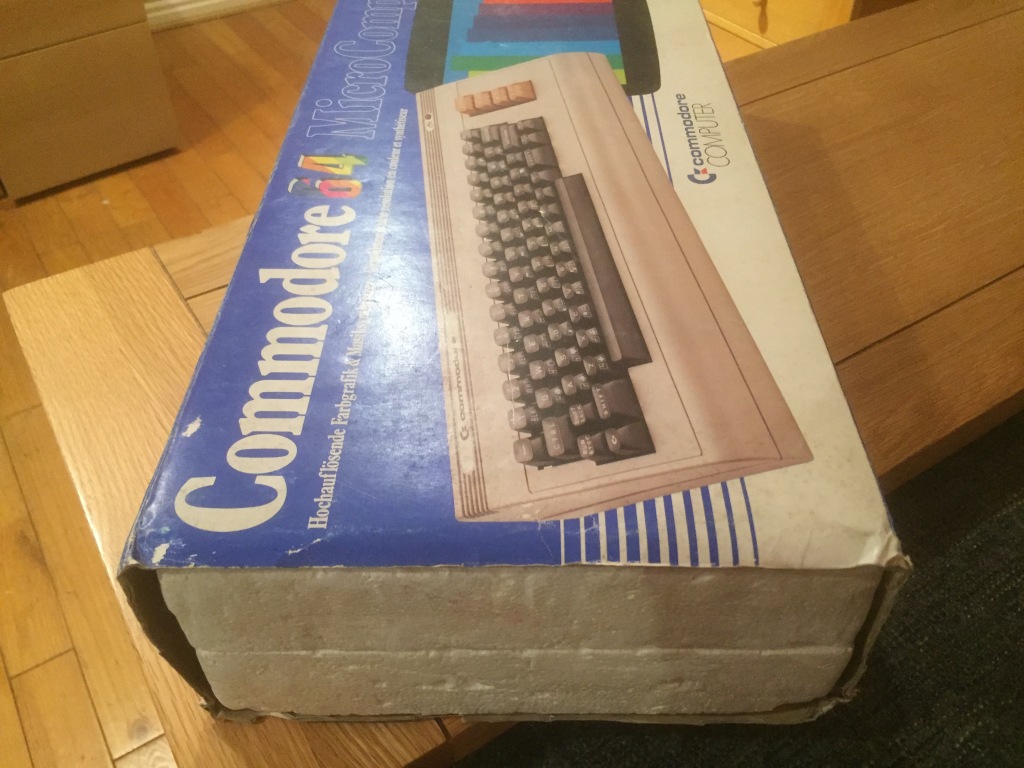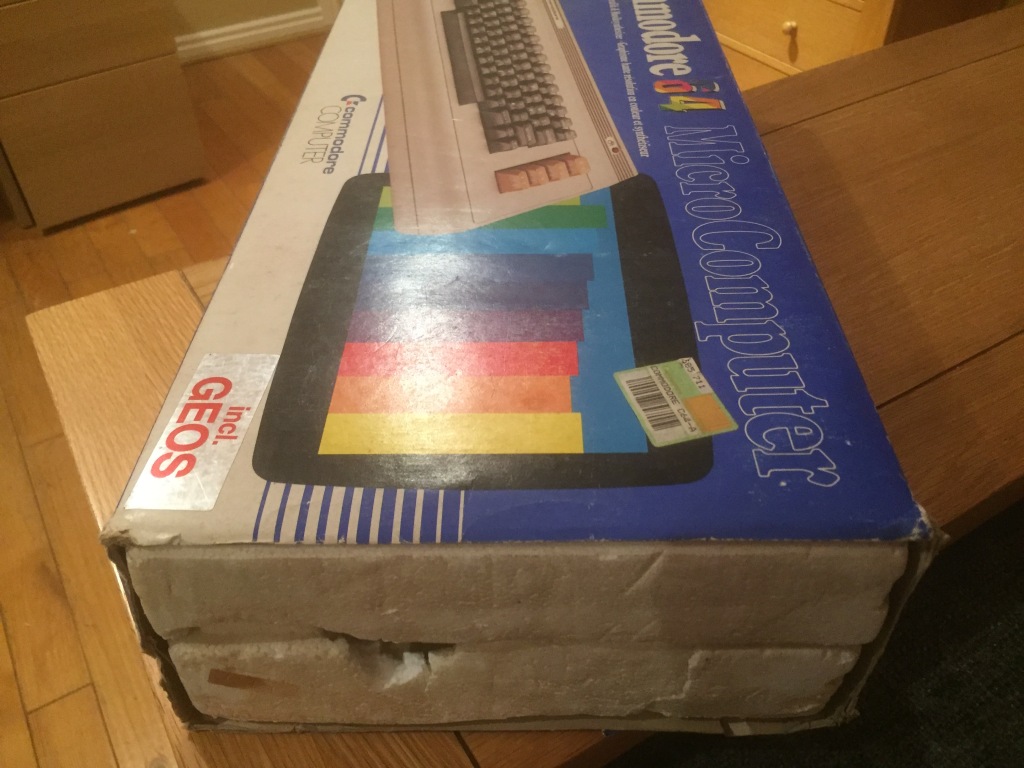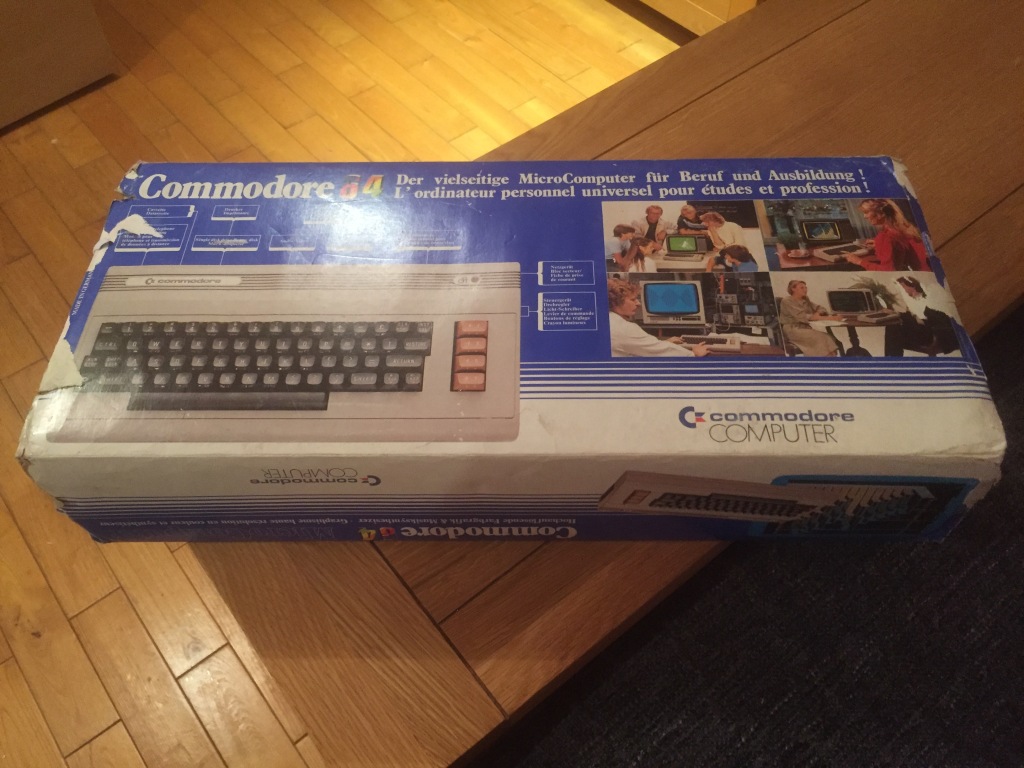A while back I got my hands on my first Commodore 64 “Aldi”, yet another 1980s 8-bit computer to add to my collection. The machine was in good condition and came with several accessories and its original box, however it was sold as “untested”.
The Commodore 64 “Aldi” was a limited edition of the C64, which is popular with collectors due to its styling – these machines were sold in Aldi (hence their nickname) and some other supermarkets in Germany for a limited period in the summer of 1987.
The “Aldi” was released during the transition period between the original C64 and the C64C, and featured parts from both machines to use up existing stocks: a “breadbin” beige case, a C64C-style keyboard, and a C64C shortboard (ASSY 250469).
Lots of reproduction and replica machines are available on the market, some even claiming to be “Aldi” models, but there are several ways of identifying an original:
– All “Aldi” units were manufactured in California, USA, in early 1987.
– All “Aldi” units have two serial labels, usually on the bottom and side of the case.
– All “Aldi” units have a serial number starting in “CA4”.
– All “Aldi” units have a grey breadbin-style case and rainbow label.
– All “Aldi” units have an early C64C-style keyboard, with markings on the key fronts.
– All “Aldi” units have an early C64C-style ASSY 250469 REV.3 shortboard.
– Most “Aldi” units have C64C-style white rubber case feet.
– Most “Aldi” units do not have port writing on the back of the computer.
– Most “Aldi” units came with C64C-style cream ribbed PSUs with EU plugs.
– Contrary to what 64’er magazine claimed, the “Aldi” does have 9Vac at the user port.
Due to their limited availability for the time, “Aldi” machines can be tricky to find, but not impossible – there are usually a couple up on eBay at any one time.
The “Aldi” seemed to be all original, and featured a 1987 ASSY 250469 REV.3 mainboard with 64 KB of factory-installed RAM – the VIC-II and SID were socketed.
The board was in excellent condition, with no signs of rework.
After checking that the PSU was working OK, I did a quick power-on test – the computer seemed to boot correctly (with flashing cursor and correct amount of RAM showing), and passed all tests with a diagnostic cartridge and loopback harness installed.
After testing, I did some basic restoration: I thoroughly cleaned the mainboard with compressed air and an ESD-safe brush; I thoroughly cleaned the case inside and out using Cillit Bang and a microfibre cloth (or a toothbrush for all the nooks and crannies); I cleaned all IC sockets, ports, and switches with contact cleaner; I also dismantled and thoroughly cleaned the keyboard.
The computer still seemed to boot OK following all of this. However – and I know this well – just because a computer boots, doesn’t mean it’s working properly. Thorough testing is necessary to verify operation, so I did as much testing as I could.
- All keys registered correctly; shift-lock mechanism worked OK.
- Power LED worked OK.
- Luma/chroma and composite video outputs worked OK.
- All diagnostic tests passed correctly with diagnostic harness and loopback harness.
Functionally, the original PSU was working fine – I usually install a modern mains plug (3A fused) on any PSUs that I use (not possible in this case), and check the output voltage(s). Aside from that, the PSU casing and cabling just needed a good clean.
I’d generally recommend using a modern PSU with most vintage computers, as some of the originals can be prone to failure. The C64 PSU is a power brick potted with epoxy, making it difficult to service and meaning that the internals run hot – it has a 7805 linear regulator inside, which can fail in such a way that its input voltage starts to leak onto its output, causing all kinds of damage to the computer due to overvoltage.
As such, I would recommend regularly checking the output voltages on these kind of PSUs with a multimeter before using them, both when cold and hot – the 9Vac output is unregulated so can range from 9Vac to 12Vac when not under load, and the 5Vdc output should really range between 5.1Vdc and 5.3Vdc when not under load.
Personally, I use a modern-made Commodore 64 PSU which is reliable and safe to use – I keep the original PSUs as a part of my collection, but generally don’t use them.

